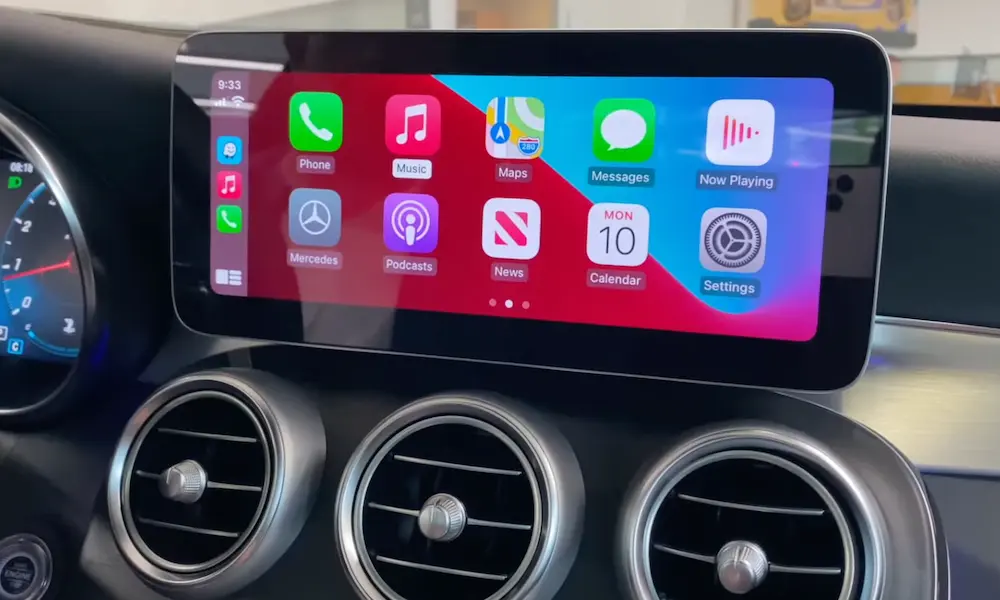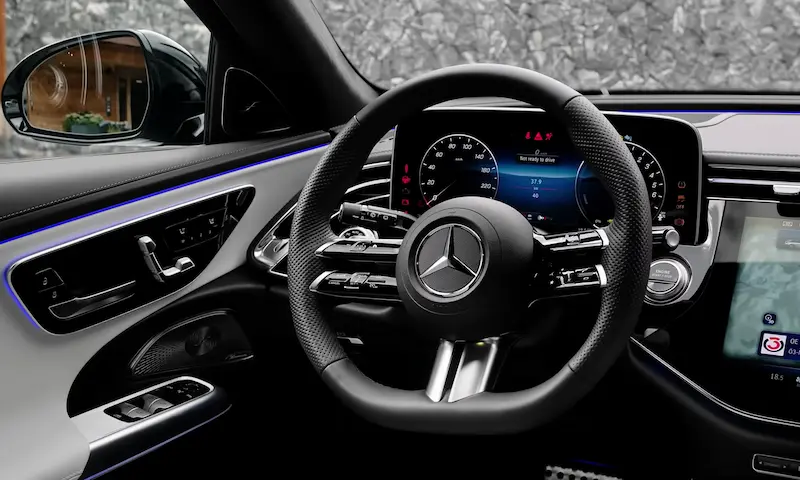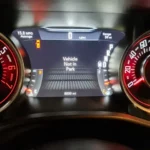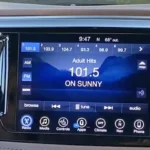Ever cranked up your favorite song in your Mercedes only to hear crackling instead of crisp sound? Or maybe you’ve experienced that frustrating moment when your premium Burmester system suddenly goes silent mid-drive. You’ve invested in luxury, and these audio hiccups can feel especially disappointing.
Let’s dive into the most common Mercedes-Benz audio system issues and how to fix them without spending a fortune at the dealership.
No Sound or Complete Audio Failure
Nothing ruins your commute like a silent drive. This problem affects numerous models, from older C-Class vehicles to brand new 2025 GLE350s.
Common Causes
The main culprits behind total audio failure typically include:
- Blown fuses: Often the simplest explanation and easiest fix
- Faulty amplifiers: Particularly common in older Mercedes models
- Disconnected wiring: Vibrations over time can loosen connections
- System crashes: Especially in COMAND systems in pre-2020 models
In the 2018 C300 Coupe, many owners reported sudden audio loss followed by complete system crashes that required full reboots to resolve. Even premium systems aren’t immune – 2025 GLE350 and GLC300 drivers have complained about Burmester sound systems producing underwhelming output.
DIY Solutions
Before heading to the dealership, try these steps:
- Check the fuses first: Locate the audio system fuse (typically in the cabin fuse box) and replace if blown
- Soft reset the system: Hold the power button for 10 seconds
- Hard reset: Disconnect the car battery for 15 minutes (remember your radio code if needed)
- Inspect wiring connections: Look for obvious disconnections, especially around door speakers
Distorted Sound and Static Interference
That premium Burmester or Harman Kardon system should deliver crystal-clear audio. If you’re hearing crackling, popping, or muffled sound, something’s definitely wrong.
Why It Happens
Audio distortion typically stems from:
- Damaged speakers: Particularly common in door-mounted units
- Loose or corroded wiring: Creates inconsistent connections
- Software glitches: Especially after updates
- Electromagnetic interference: More common in older models
In the 2025 Sprinter, some owners resorted to disconnecting faulty tweeters to stop harsh high frequencies, inadvertently damaging connectors in the process. Meanwhile, software issues plague newer MBUX systems, with voice command errors and Bluetooth pairing failures indirectly affecting overall audio quality.
Best Fixes
To address distortion problems:
- Test individual speakers: Play music and listen at each speaker location to identify problem areas
- Clean connections: Corrosion at speaker terminals can cause static
- Update software: Check for available updates via the Mercedes me app or at your dealer
- Adjust audio settings: Try disabling sound enhancers like Center Point surround sound, which can cause distortion in some systems
Intermittent Audio and System Crashes
Perhaps the most frustrating issue is inconsistent performance – working perfectly one moment, then cutting out entirely the next.
Root Causes
Intermittent audio problems typically point to:
- Loose wiring harnesses: Creating temporary connection breaks
- Failing control modules: Particularly the MOST (Media Oriented Systems Transport) module
- Software instabilities: Especially after updates
- Overheating components: More common in summer months
The 2018 C300 Coupe’s COMAND system exemplifies this issue, with audio dropping out during drives before culminating in a blank screen. In the W221 S-Class, a malfunctioning MOST module has been known to cause complete audio and navigation failure, requiring costly replacement.
Effective Solutions
When dealing with intermittent issues:
- Perform a full system reset: Via the vehicle settings menu
- Check for loose connections: Focus on the back of the head unit
- Test after driving: Some issues only appear after the system heats up
- Rule out device problems: If using Bluetooth, try a different phone or playback method
MBUX System Troubles in Newer Models
The latest Mercedes MBUX systems offer impressive features but introduce new potential failure points.
Common MBUX Issues
Owners of 2025 models frequently report:
- Voice command inaccuracy: The system misinterprets requests
- Touchscreen unresponsiveness: Requiring system restarts
- Bluetooth connectivity problems: Devices disconnect unexpectedly
- Software bugs after updates: Particularly affecting audio sync
Despite having five USB-C ports and extensive smartphone integration, the 2025 CLA struggles with reliable Bluetooth connections. Devices disconnect without warning, and re-pairing requires tedious steps like clearing all previous connections.
Troubleshooting MBUX
For the latest infotainment systems:
- Force restart MBUX: Press and hold the power button for 12+ seconds
- Clear paired devices: Remove all Bluetooth devices and pair again
- Check for software updates: Newer firmware often addresses connectivity issues
- Use the Mercedes me app: Sometimes it allows remote troubleshooting of system issues
Declining Audio Quality in Recent Models
Ironically, some owners report that newer Mercedes audio systems sound worse than older ones.
The Quality Gap
Recent complaints center around:
- Weak bass response: Even in premium Burmester systems
- Distortion at higher volumes: Particularly in the mid-range
- Thin or “tinny” sound quality: Lacking the richness of older systems
- Poor sound imaging: Unclear stereo separation
The 2025 GLC300’s Burmester system has disappointed many users with weak bass and distorted highs at elevated volumes. This decline contrasts with the Harman Kardon system in the 2017 GLS550, which owners praise for its richness and clarity.
Improvement Options
When facing underwhelming sound quality:
- Adjust equalizer settings: Many owners find factory settings inadequate
- Disable sound “enhancements”: Features like surround sound can degrade quality
- Use high-quality audio sources: FLAC files or high-bitrate streaming
- Consider speaker upgrades: Some components can be enhanced while maintaining factory integration
Wiring and Hardware Failures
Mercedes’ complex wiring architectures enable advanced features but create more potential failure points.
Common Hardware Issues
Physical components that frequently cause problems:
- Frayed wiring: Especially in components that move (like door harnesses)
- Failing amplifiers: Often located under seats or in the trunk
- Corroded connections: More common in humid climates
- Speaker damage: From age or excessive volume
In the W221 S-Class, a single frayed wire in the MOST loop has been known to disrupt the entire infotainment suite. Similarly, the 2025 Sprinter’s audio issues often trace to poorly shielded cables that pick up engine interference.
Detection and Repair
For hardware troubleshooting:
- Visual inspection: Check for obvious wire damage
- Test with a multimeter: Measure speaker impedance for signs of failure
- Listen for rattles: They often indicate loose components
- Tap test components: Sometimes intermittent issues appear when gently tapping suspected parts
Software Glitches and Firmware Issues
As Mercedes vehicles become more software-dependent, coding issues increasingly affect audio performance.
Software Problem Patterns
Common software-related audio issues include:
- System crashes during playback: Particularly with high-bitrate files
- Audio sync problems: During media playback or calls
- Function loss after updates: Features that worked before suddenly failing
- Bluetooth connectivity issues: Particularly with newer phones
A 2025 EQS owner reported audio sync issues during over-the-air updates, which required a dealership-installed rollback to resolve. Meanwhile, the 2025 CLA’s MBUX experienced a surge in Bluetooth dropouts following a January 2025 update, prompting Mercedes-Benz to issue a patch.
Software Solutions
When dealing with software issues:
- Check for updates: Some problems have official fixes
- Clear cache data: Through the system settings menu
- Reset to factory defaults: As a last resort before service
- Document the problem: Record when it happens for service technicians
| Model Year | Common Audio Issues | Typical Solutions |
|---|---|---|
| Pre-2015 | Amplifier failure, CD mechanism issues | Component replacement, aftermarket upgrades |
| 2015-2020 | COMAND crashes, Bluetooth connectivity | Software updates, system resets |
| 2020+ | MBUX bugs, sound quality complaints | Firmware updates, equalizer adjustments |
Regional and Model-Specific Variations
Not all Mercedes audio systems are created equal – even within the same model line.
Model Differences
Audio system performance varies significantly across the lineup:
- S-Class and EQS: Receive most robust components with fewer issues
- C-Class and GLC: Mid-range with occasional amplifier problems
- A-Class and GLB: Entry-level with simpler systems but more software quirks
- Sprinter: Utilitarian design with minimal sound insulation
Even premium models aren’t immune to problems. The 2025 GLS’s Burmester 4D system has suffered from rattling subwoofers – a problem absent in the cheaper MBUX-equipped GLA.
Market Variations
User experiences also differ by region due to:
- European vs. North American configurations: Different hardware specs
- Satellite radio differences: SiriusXM reception issues more common outside North America
- Software versions: Updates rolled out at different times globally
European models often feature smaller amplifiers optimized for fuel efficiency, while North American versions prioritize power output. This explains why a 2025 C-Class in Germany might underperform compared to its U.S. counterpart.
Professional Repair Options
While DIY solutions work for many issues, some problems require expert attention.
When to Seek Professional Help
Consider professional service when:
- Multiple components fail simultaneously
- Error messages persist after resets
- Physical damage is evident
- Issues worsen over time
Technicians use STAR Diagnostic systems to scan for error codes and test MOST network integrity. In the 2025 GLC300, amplifier replacements under warranty have resolved chronic distortion issues, though parts shortages have sometimes delayed repairs.
What to Expect at the Dealership
During professional service:
- Diagnostic scan: To identify error codes
- Software updates: Often performed regardless of the issue
- Component testing: Using specialized equipment
- Network diagnostics: For MOST/CAN bus integrity
Always request that technicians document their findings and any work performed. This creates a service history that helps with future troubleshooting or warranty claims.
Preventative Measures
An ounce of prevention is worth a pound of cure – especially with complex audio systems.
Protecting Your System
To minimize future issues:
- Avoid extreme volume levels: They stress amplifiers and speakers
- Keep software updated: But wait a week after new updates to let others find bugs
- Use high-quality cables: For auxiliary or USB connections
- Maintain battery health: Low voltage can cause system glitches
Regular maintenance checks can identify potential issues before they become major problems. During routine service, ask technicians to check audio system connections and update firmware.
| Maintenance Task | Frequency | Benefit |
|---|---|---|
| Software updates | Every 6 months | Improves stability, fixes known bugs |
| Connection checks | During regular service | Prevents intermittent issues |
| Sound quality test | Annually | Identifies speaker degradation early |
| Battery health check | With oil changes | Prevents voltage-related glitches |
Long-Term Reliability Considerations
Different Mercedes audio systems show varying reliability over time.
Track Record by System Type
Based on owner feedback:
- Harman Kardon systems: Generally reliable with occasional amplifier issues
- Burmester systems: Excellent sound but more complex repair needs
- Base audio systems: Fewer components to fail but less impressive sound
- MBUX-based systems: Still establishing long-term reliability patterns
While the 2017 GLS550’s Harman Kardon system maintains its performance years later, the 2025 Sprinter’s audio system has required modifications within months of purchase for some owners.
Making an Informed Purchase
For those shopping for a Mercedes:
- Research specific model years: Some had better audio reliability
- Consider certified pre-owned: These undergo thorough inspections
- Test all functions before buying: Used cars especially
- Check for extended warranty coverage: Audio systems are often included
The best protection is knowing what to look for. Test every audio function thoroughly before purchasing, including Bluetooth, radio reception, and sound quality at various volumes.












